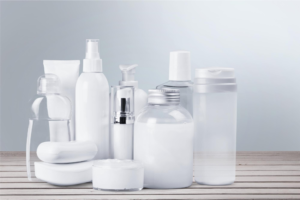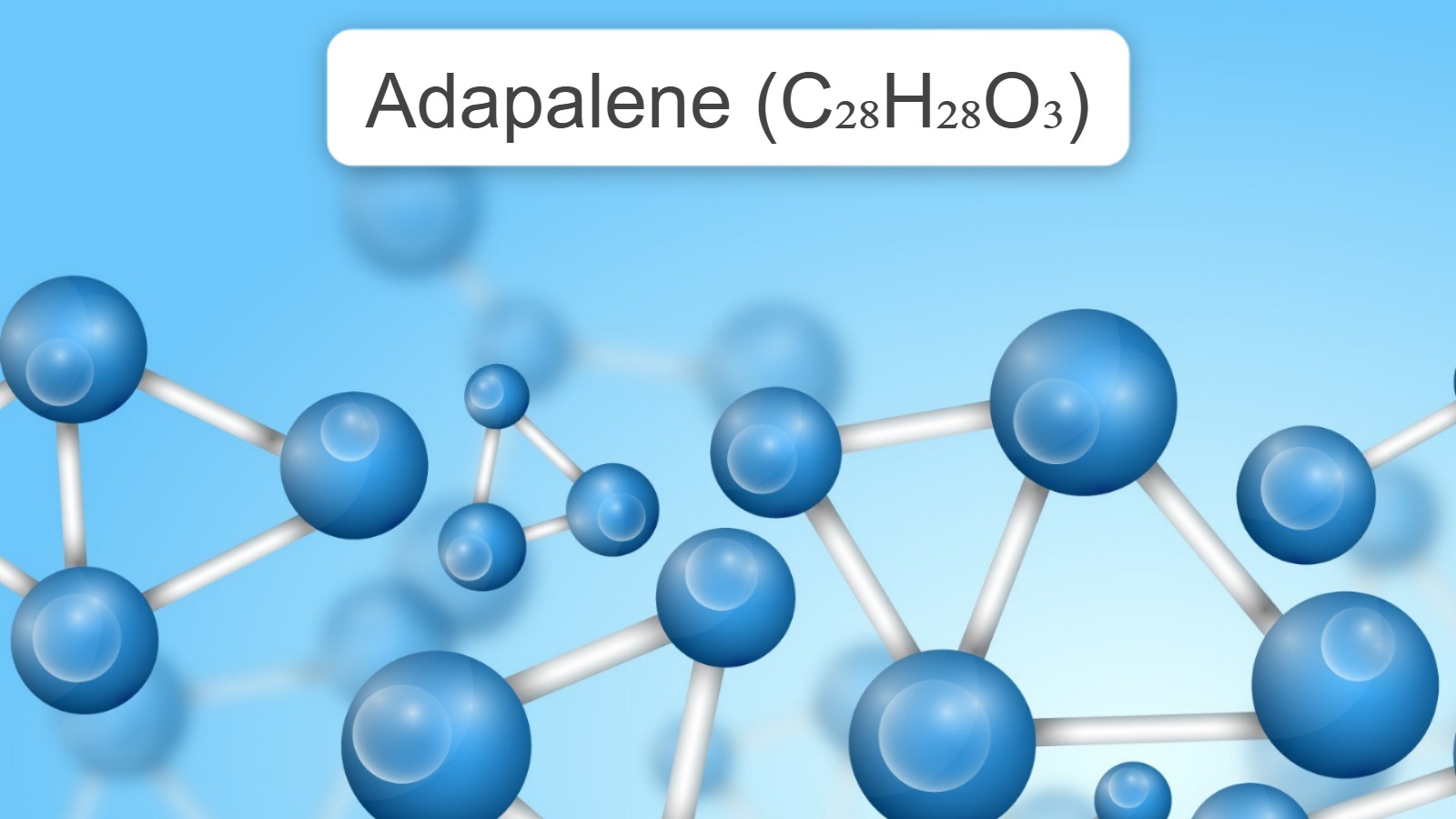
Adapalene API is a widely recognized third-generation retinoid commonly used for acne treatment. Its unique structure, chemical properties, and targeted mechanism of action make it a staple in dermatology. This detailed blog explores Adapalene’s structure, properties, pharmacology, and safety in-depth.
1. Adapalene API structure
Adapalene‘s chemical structure is the foundation of its efficacy in dermatological applications.
2D Structure
Adapalene‘s 2D structure reveals its naphthoic acid core, functionalized with a 1-adamantyl group and a methoxyphenyl substituent. This configuration enhances receptor specificity and stability.
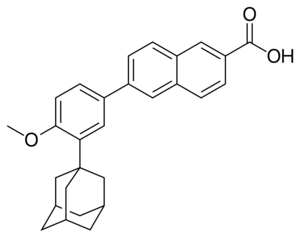
3D Structure
Adapalene’s 3D molecular structure provides a visual representation of its atomic interactions, which enable its selective binding to retinoic acid receptors (RARs), particularly RARγ.
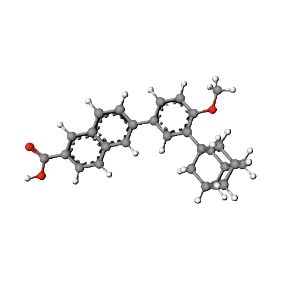
2. Adapalene API names and Identifiers
Adapalene is well-documented under various scientific identifiers.
- IUPAC Name: 6-[3-(1-adamantyl)-4-methoxyphenyl]naphthalene-2-carboxylic acid
- Molecular Formula: C₂₈H₂₈O₃
- Molecular Weight: 412.52 g/mol
- CAS Registry Number:106685-40-9
- Synonyms: Differin, Adaferin
3. Adapalene API Chemical and Physical Properties
Adapalene’s physical and chemical attributes contribute significantly to its effectiveness.
| Property | Details |
|---|---|
| Appearance | White to off-white powder or crystalline solid |
| Melting Point | 315–318°C |
| Boiling Point | Decomposes before boiling |
| Solubility | Sparingly soluble in THF; very slightly soluble in diethyl ether |
| LogP (Partition Coefficient) | 8.3 |
| Chemical Class | Naphthoic acid derivative; Retinoid |
These properties enhance Adapalene’s penetration through the skin layers, targeting sebaceous glands for acne treatment.
4. Adapalene drug and medication Information
Adapalene is primarily indicated for treating acne vulgaris. It is available in the following formulations:
- Gels: 0.1% and 0.3% concentrations.
- Creams and Lotions: Used for sensitive skin types.
Mechanism of Action
Adapalene acts by:
- Normalizing Keratinization: It prevents the formation of microcomedones by modulating follicular epithelial cell differentiation.
- Anti-inflammatory Activity: Adapalene reduces the release of pro-inflammatory mediators like cytokines.
- Retinoid Receptor Binding: Selectively binds to RARγ, avoiding RARα, which reduces irritation.
Dosage and Administration
- Apply a thin layer once daily in the evening on clean, dry skin.
- Avoid contact with eyes, lips, and mucous membranes.
Explore a leading manufacturer of APIs.
With over 10 years of expertise, we ensure GMP compliance and provide reliable, high-quality solutions.
5. Adapalene API Pharmacology and Biochemistry
Adapalene’s pharmacology revolves around its retinoid receptor activity.
Pharmacokinetics
- Absorption: Minimal systemic absorption (<0.1%), making it safe for long-term use.
- Metabolism: Primarily metabolized in the liver via hydroxylation and conjugation.
- Excretion: Excreted in bile and urine.
Pharmacodynamics
Adapalene’s action involves regulating gene transcription associated with keratinocyte proliferation and inflammation. This dual action reduces acne formation and improves skin texture over time.
6. Adapalene API uses and side effects
Primary Uses
- Acne Treatment: Adapalene is FDA-approved for mild to moderate acne.
- Off-label Uses:
- Treatment of keratosis pilaris.
- Reducing fine lines and wrinkles.
Benefits for Acne
- Reduces clogged pores.
- Improves skin tone.
- Prevents future breakouts.
Side Effects
Adapalene is generally well-tolerated, but initial irritation can occur. Common side effects include:
- Dryness, peeling, and redness.
- Mild burning or itching sensation.
Mitigation Tips
- Use a moisturizer to counteract dryness.
- Apply sunscreen to prevent photosensitivity.
7. Adapalene API safety and hazards
Safety Profile
Adapalene is safe for most individuals when used as directed. It is not recommended for:
- Pregnant individuals (potential teratogenicity).
- People with severe skin conditions like eczema.
Handling Precautions
- Avoid inhalation of raw chemical powder.
- Store in a cool, dry place, away from direct sunlight.
Chemical Safety
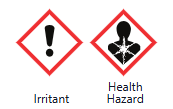
Environmental Impact
- Biodegradable in aquatic systems.
- Minimal ecological risk due to limited environmental persistence.
FAQs
Adapalene Chemical Formula?
Adapalene Chemical Formula is C28H28O3
Adapalene Molecular Weight?
Adapalene Molecular Weight is 412.5 g/mol
IUPAC Name of Adapalene?
IUPAC Name of Adapalene is 6-[3-(1-adamantyl)-4-methoxyphenyl]naphthalene-2-carboxylic acid.
Solubility of Adapalene?
Adapalene practically insoluble in water; soluble in ethanol, acetone, and other organic solvents.
What is Adapalene used for?
Adapalene is primarily used for treating acne vulgaris. It is also effective for fading post-acne marks, managing keratosis pilaris, and off-label anti-aging purposes.
How does Adapalene work?
Adapalene targets retinoic acid receptors in the skin to regulate keratinocyte behavior, unclog pores, and reduce inflammation, promoting smoother and clearer skin.
How long does it take to see results?
Most users notice improvements within 8–12 weeks of consistent use. Initial purging (temporary worsening of acne) may occur as clogged pores are cleared.
Should I use sunscreen with Adapalene?
Yes. Adapalene increases skin sensitivity to UV rays, making sunscreen essential to prevent sunburn and hyperpigmentation.
Can I use Adapalene with other acne treatments?
Yes, Adapalene can be combined with treatments like benzoyl peroxide for enhanced results. However, avoid using it with other retinoids or exfoliants to prevent irritation.
How should I apply Adapalene?
Apply a pea-sized amount to clean, dry skin at night, avoiding the eyes, nostrils, and mouth. Follow with a moisturizer and use sunscreen during the day.
Can Adapalene help with acne scars?
Yes. By promoting cell turnover and collagen production, Adapalene helps fade post-acne marks and improves the appearance of shallow scars over time.
Is Adapalene suitable for sensitive skin?
Adapalene is less irritating than older retinoids, but sensitive skin may experience mild dryness or redness. Using a moisturizer and sunscreen helps mitigate these effects.


